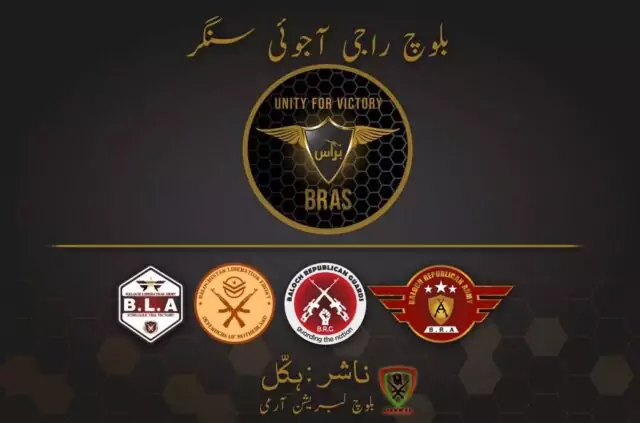Kiyya Baloch

BLF and BLA Likely to Merge
The BLF is a banned militant group led by Dr. Allah Nazar Baloch, who is a former physician-turned-guerrilla leader that gained popularity after a car bomb attack in 2004. The bombing killed three Chinese engineers and injured 11 others in Gwadar (Dawn, May 5, 2004). The BLF has maintained a militant presence in the coastal Makran Division and Awaran District for two decades. Dr. Allah Nazar initially founded the Baloch Student Organization (BSO Azad) in 2002. It was a radical youth organization, but was banned in Pakistan in 2013 on charges of supporting Baloch armed groups. In 2004, Dr. Allah Nazar departed from student politics and co-founded the BLF with other like-minded people (India Narrative, August 11, 2022).
On the other hand, the BLA gained attention in the summer of 2000 after the group claimed responsibility for a market bomb attack in Quetta, Balochistan (The Balochistan Post, July 20, 2020). The BLA was initially led by Balach Marri, who is the son of Nawab Khair Bakhsh Marri, himself a Marxist leader involved in the 1970s Baloch insurgency. Even today, Marri remains an icon for Baloch insurgents. However, the BLA suffered internal divisions three years after Balach Marri’s death in a military operation along the Pakistan-Afghanistan border in 2007. The group split into two factions in 2010, giving rise to the United Baloch Army (UBA) (The Balochistan Post, January 16, 2022). In 2017, the BLA experienced another division, resulting in two factions, including one led by Aslam Baloch and another by Azad Baloch. The former leader, however, was killed by a clandestine suicide bomber in Kandahar, Afghanistan, in December 2018 (Tolo News, December 26, 2018). Following Aslam Baloch’s death, Bashir Zaib, the former BSO Azad chairman, assumed control of the BLA (see Militant Leadership Monitor, September 2022).
Impact on Pakistan and China
The new post-merger movement’s name and leadership have not yet been decided, but the unification could enhance Baloch militants’ presence in areas that are currently less affected by the insurgency. The merger may further increase the occurrence of activities against China-led projects, particularly those linked to the $65 billion China-Pakistan Economic Corridor (CPEC). If the merger materializes, the two most influential and deadliest Baloch militant groups are likely to escalate attacks on law enforcement agencies and Chinese interests along the Makran coast. Makran has been a geographic center of CPEC activity, along with Karachi.
The BLA and BLF merger would also enable them to leverage one another’s sanctuaries, resources, and manpower, which they can use to intensify pressure on the Pakistani government. Additionally, the merger could more closely align other militant groups operating from Balochistan, where at least nine such groups currently exist under different leadership. Some lesser-known insurgent groups lack organization and centralized direction, but there is now a widespread recognition among Baloch armed group leaders that their collective lack of unity has significantly hampered their movement. This realization originally led to the formation of BRAS in October 2017 (see TM, September 20, 2019). Now there is a further realization that uniting into a single group, akin to an army, allows all of the various groups to execute more deadly attacks and further impact Pakistani policy (be it toward China or Baloch liberation) than they would if they continue to remain separate.
Risk of Division Remains
Given the history of infighting among Baloch armed groups, the sustainability of the proposed merger remains in question. Internal conflicts have previously resulted in deadly clashes between the various Baloch factions. As previously mentioned, the BLA experienced a split in 2010, leading to deadly clashes between BLA militants and the UBA in June 2015 (Express Tribune, June 29, 2015). BLF experienced a similar division. Mohammed Bux, also known as Jagoo, initially joined the BLF but later formed his own group, the Balochistan National Liberation Front (BNLF) after being dismissed from BLF for violating internal BLF discipline. Despite facing personal losses, Jagoo surrendered to authorities and was subsequently killed by another Baloch armed group (criticallegalthinking.com, November 14, 2013).
In the past, divisive rhetoric also emerged within other existing groups. As mentioned earlier, in 2017 a disagreement led to the forming of a new faction within the BLA, with Aslam Baloch leading one group and Azad Baloch leading another. Aslam Baloch was subsequently killed in 2018 in Kandahar by a clandestine suicide bomber (Humgaam, December 2, 2017). Similarly, the Baloch Republican Army (BRA) experienced a split in 2018, with Gulzar Imam founding the Baloch Nationalist Army (BNA) before being arrested. In 2022, after Imam’s arrest, the BNA accused other militant groups within BRAS of failing to cooperate, and subsequently left the coalition (The Khorasan Diary, September 7).
Conclusion
While tribal bitterness and internal rifts have historically plagued the Baloch insurgency, there is currently a realization among top insurgent leaders that they could more effectively challenge the superior Pakistani forces and help the Baloch achieve their goals together. BLF leader Dr. Allah Nazar expressed this sentiment on social media when he emphasized the need for a merger within the alliance of BRAS (X/@Dr Allah Nazar Baloch, November 2). However, the history of such alliances suggests that internal tensions may persist. Nevertheless, the merger of these groups could increase their strength and operations and pose a heightened threat to both Chinese interests and Pakistan.

No comments:
Post a Comment